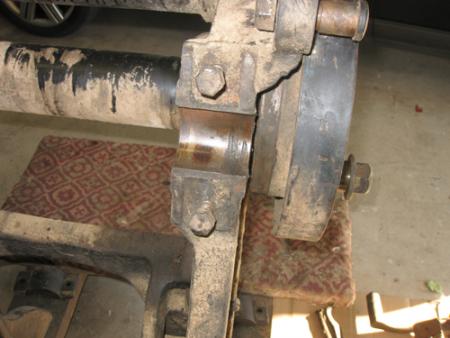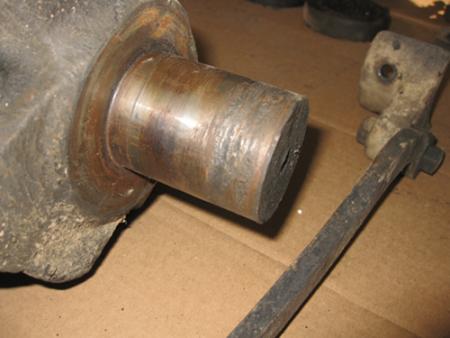Restoring an C&P OS 10x15
Hello,
I have recently purchased a C&P 10x15 and am in the midst of a restoration on it. After taking it apart I have noticed some wear on some of the pieces. I am assuming from improper oiling from the previous owner. This is not my first time around a press, but it is my first C&P. I have previously been using a Pearl improved #11. Can anyone give me any ideas if this can be fixed? or at least rigged to prevent further wear without adjusting the ‘play’ of the platen? This is the collar and shaft of the platen. I will also have a few more question on other pieces, but I don’t want to get ahead of myself. Any help is greatly appreciated.
Kacey

chandler and price restoration 116.jpg

chandler and price restoration 120.jpg
The question is more “Is there any play in the platen when it is all assembled?” My C&P 8x12OS displays similar damage to the rocker shafts like this. But there is relatively little play in the assembled press, so I pretty much ignored this and try to keep things well oiled. I did try to lightly file away any metal that stood above the surface of the rocker boxes or on the shaft to prevent further gouging.
It is my belief that this is from foreign matter getting into the rocker box oil holes. So clean this all out well and keep it well oiled. A twist drill with the tip ground off that is the same size as the oil hole has been used by some folks to clean out the holes.
If there is a lot of play in the assembled press, another place that should be examined for excessive wear is the cam race inside the bull gear and the follower cam. This is probably to hardest spot to lubricate on the press and is often the culprit in a “loose” press.
This kind of damage is also called “spalling” and is usually caused by lack of lubrication. A slightly tight area, possibly caused by dirt, heats up with the friction of movement and can actually melt a small amount of the metal. The melted blob then cools and makes a bump which continues the process, scoring out the mating bearing and making the kind of damage shown. Note the discoloration of the metal, probably also caused by over heating. Arie’s ideas of filing off the high spots and lubricating well should avoid further damage and if the bearing is otherwise snug the press should be fine.
Bob
Thank you for the replies. There is very little, if any, play with the platen when assembled; even though it seems the press with used for die cutting - it was done in sort runs. I was hoping that proper oiling would be enough to prevent further wear. I will probably still file off some of the rougher areas and keep an eye on the the entire area. I will be checking the cam track on the other side to seed about any damage to the wheel or track - thanks for the tip.
Thank you for the replies. There is very little, if any, play with the platen when assembled; even though it seems the press with used for die cutting - it was done in sort runs. I was hoping that proper oiling would be enough to prevent further wear. I will probably still file off some of the rougher areas and keep an eye on the the entire area. I will be checking the cam track on the other side to seed about any damage to the wheel or track - thanks for the tip.